"Danger for Outdoor Activity!" warned the app in red flashing writing. 45°C (113°F) is not an ideal temperature to be marvelling at some of the world's most beautiful Islamic architecture in fabled Silk Road cities. However, the draw of the ancient civilisations drew us out from the shadows in the early morning and evening, where we got caught up in the romance of being at the heart of the Central Asia.
Hostel Rumi was an ideal parking spot in Bukhara, a quiet spot just on the edge of the old town with easy access. Uzbekistan requires visitors to produce a registration slip from a hotel for most of the nights when they leave. As most of the things we wanted to see in Uzbekistan are city based, it didn't alter our plans. It seems that there are a couple of hostels in each town have cottoned onto overlanders needs and provide registration and facilities for a few dollars. What was even better was that the common areas had air conditioning and lots of other travellers to chat to.
Every street we turned into seemed to contain another arched madrassa or mausoleum decorated with intricately decorated tiles in all different shades of blues and whites. Looking up at the turquoise domes in the cloud free azure sky it was so beautiful it almost made you feel dizzy - or was it just the heat? We came across only one mosque that was still active, the rest were museums or, frustratingly for Steve, souvenir shops. However it didn't distract from their artistry and to the untrained eye the renovations were relatively sympathetic.
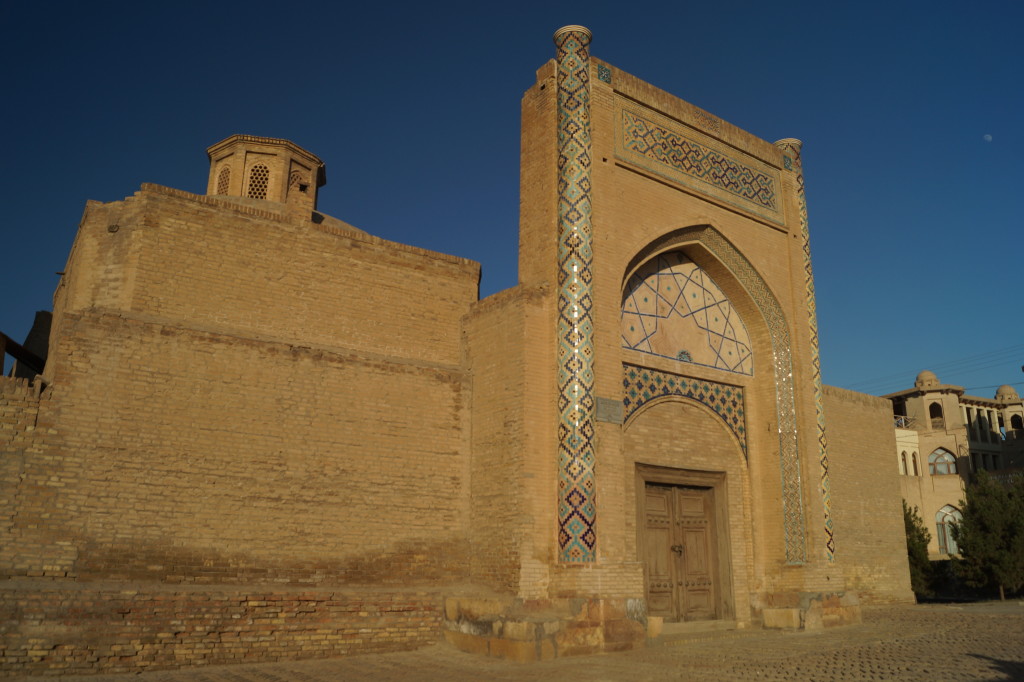
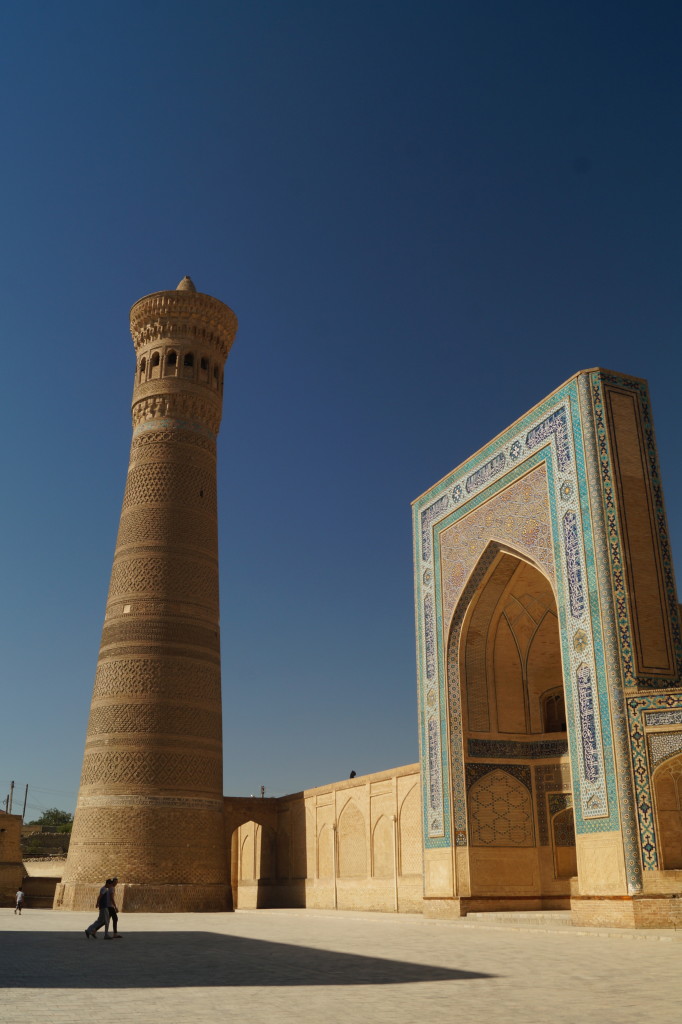
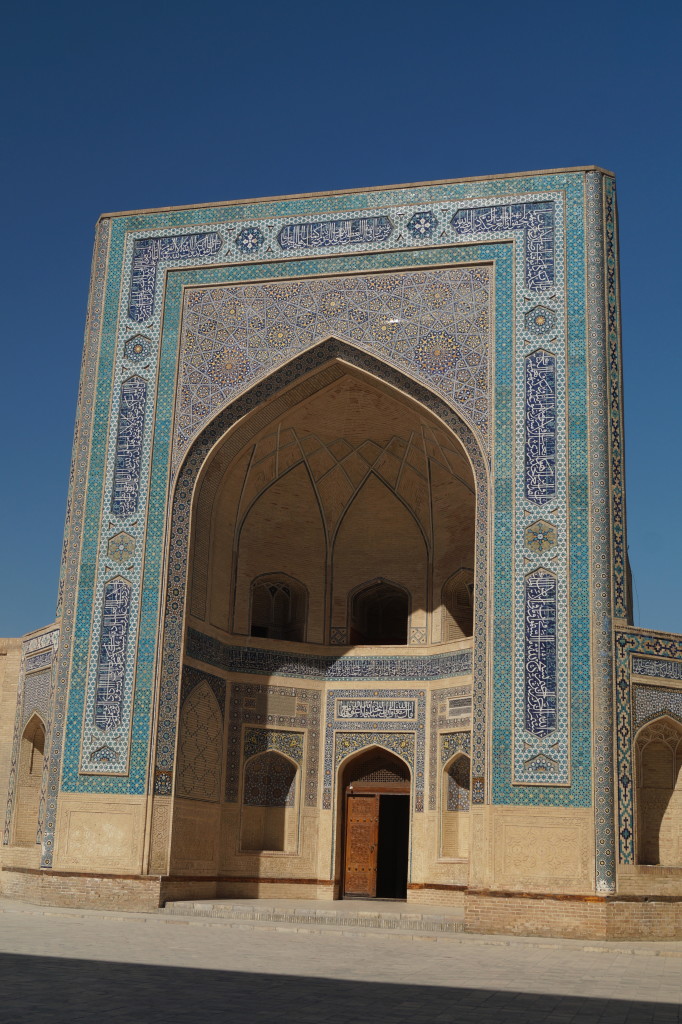
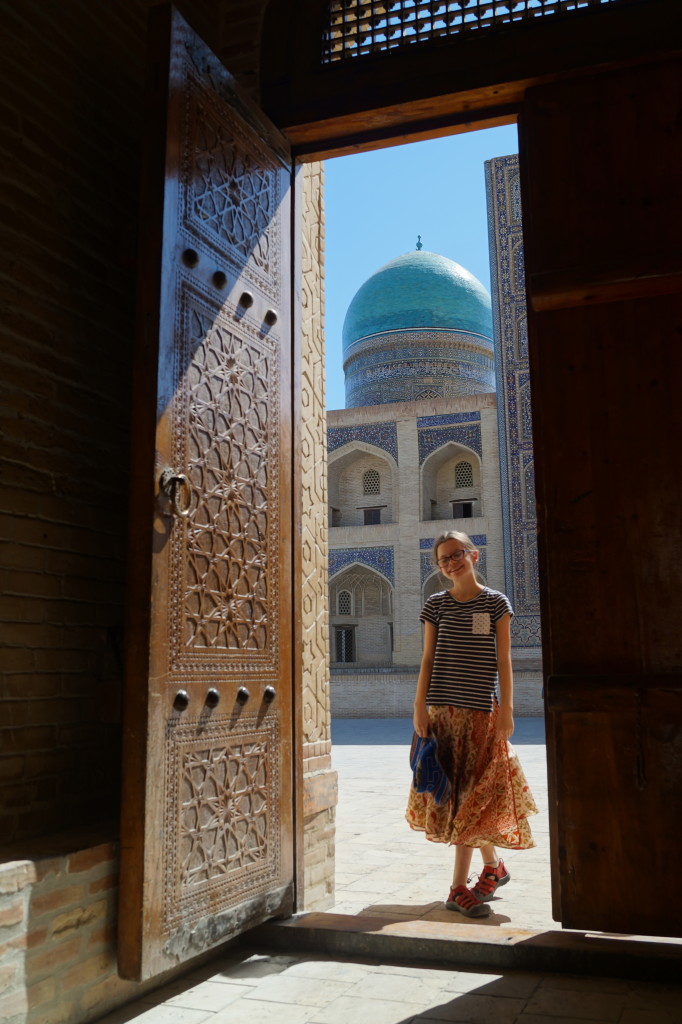
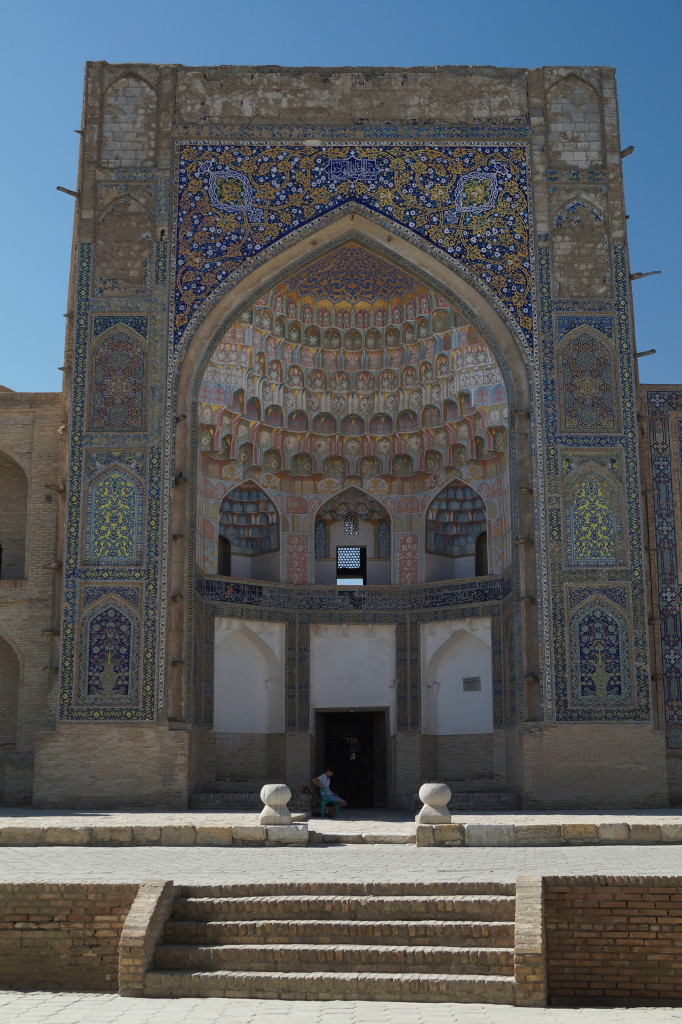
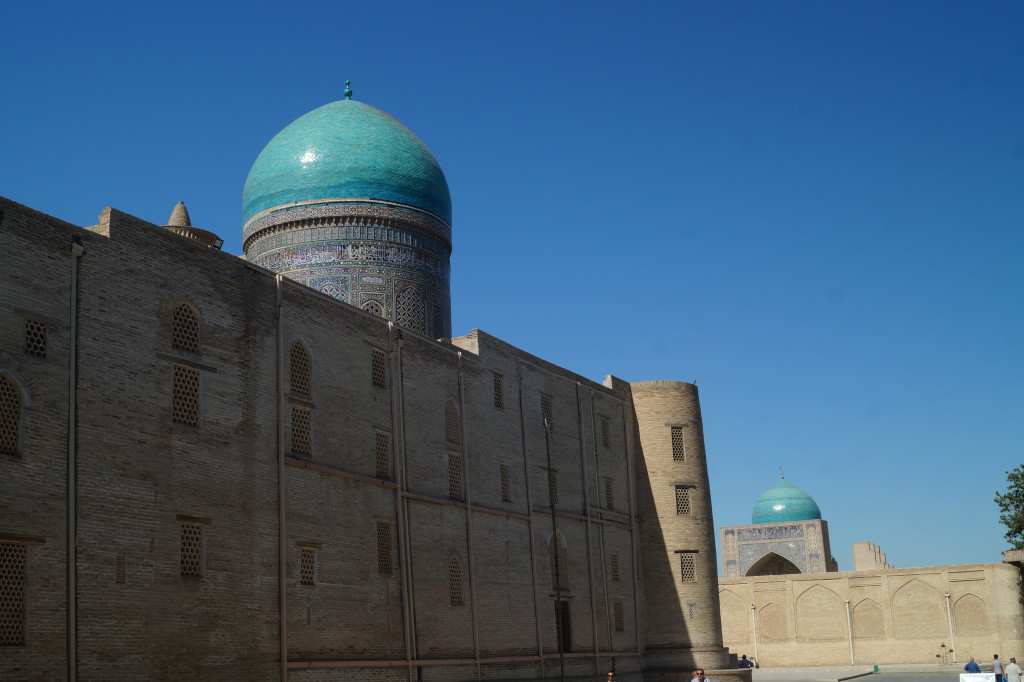
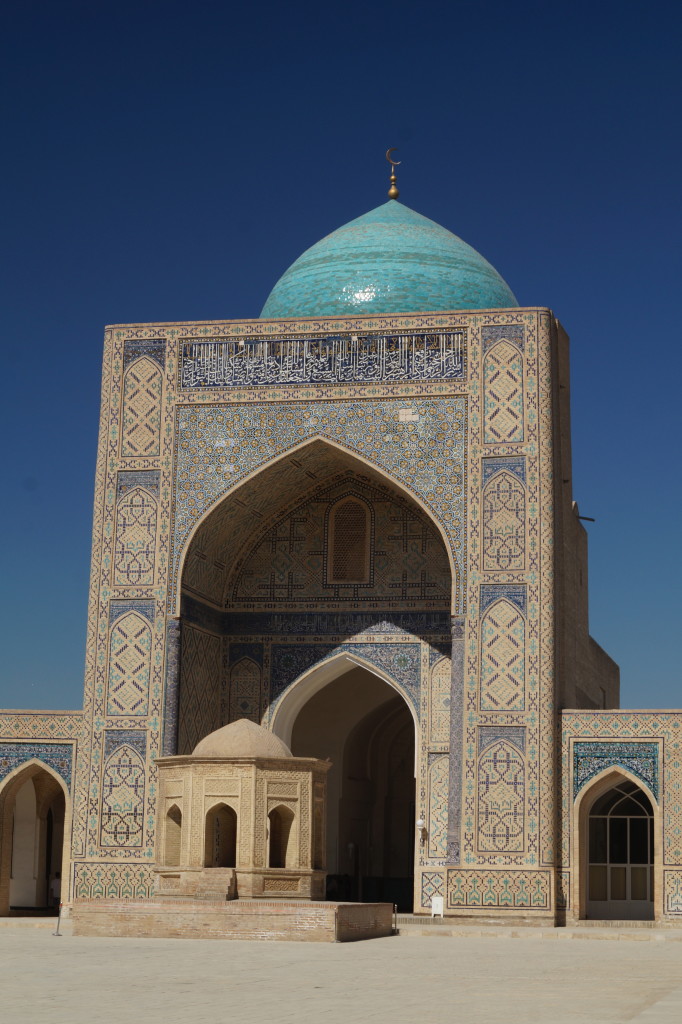

The whole region was the backdrop of a period of high drama and intrigue in the Victorian era between the British and the Russians. Dramatically named the "Great Game" in English or the "Tournament of Shadows" in Russian. This struggle for power by the two great empires, reads like something out of a historical adventure novel. Steve was keen to see the bug infested pit where two British officers, Charles Stoddart and Arthur Conolly were held by the Emir of Bukhara for 3 years before they were executed. I decided to skip that delight and sweat quietly in the shade.
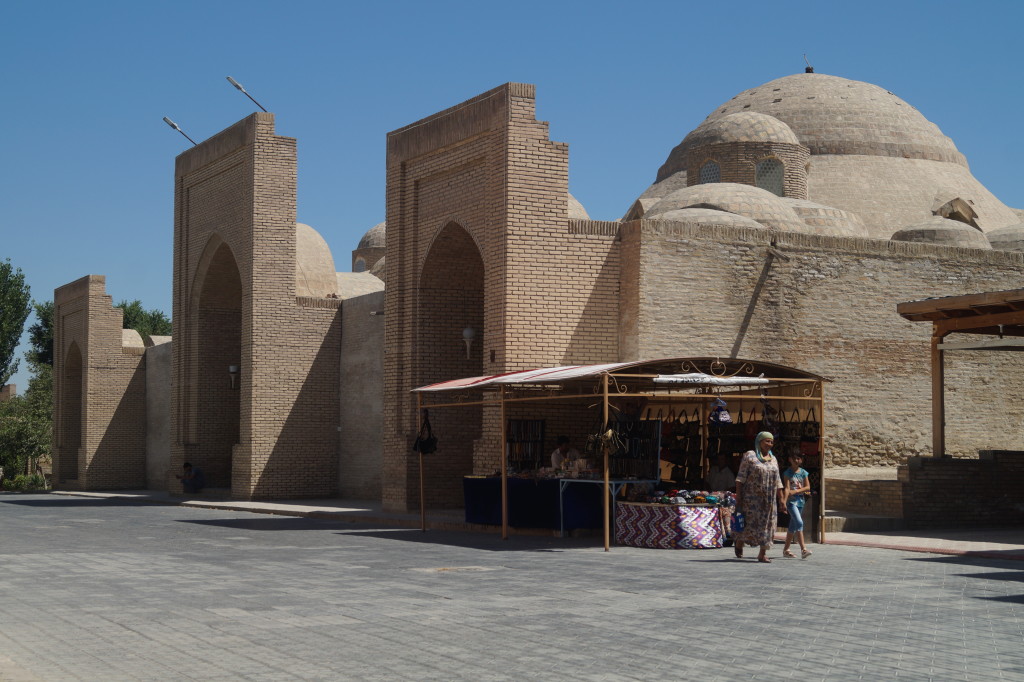
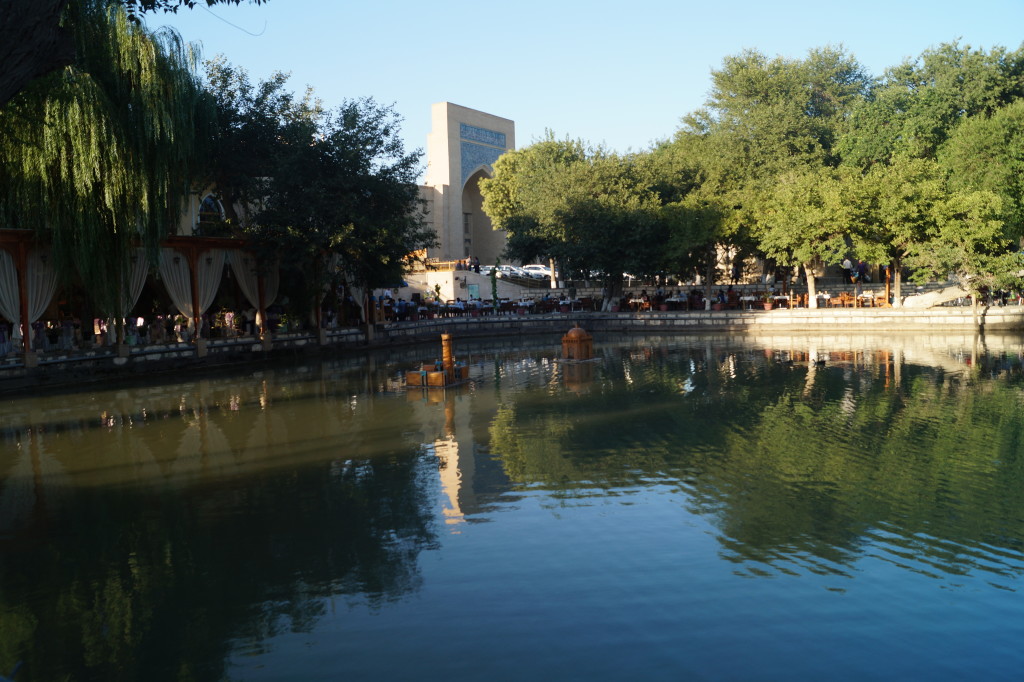
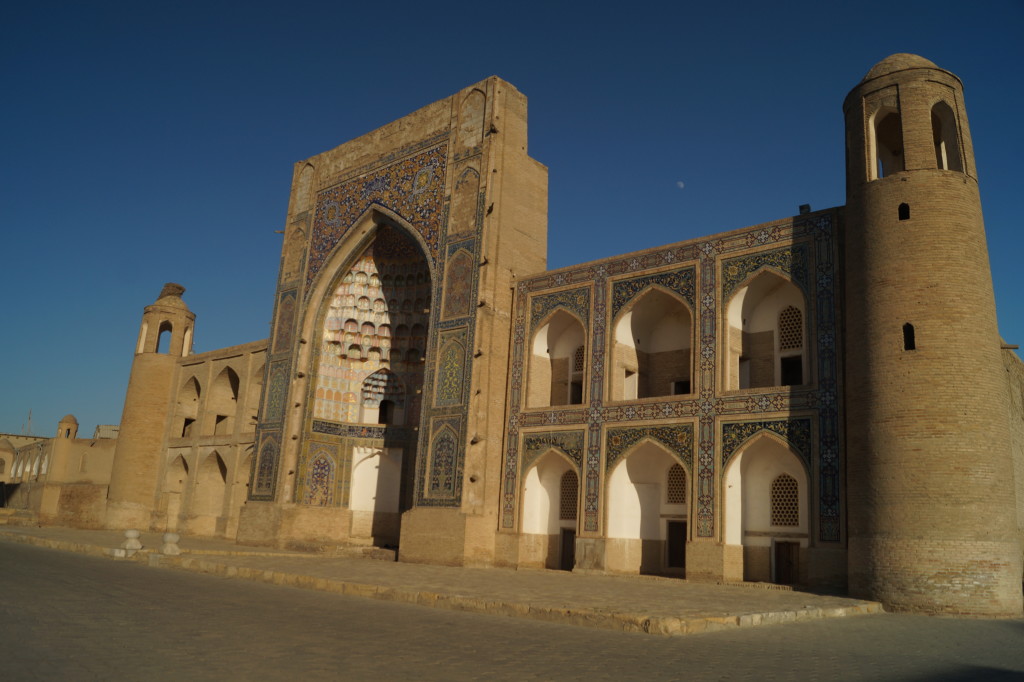
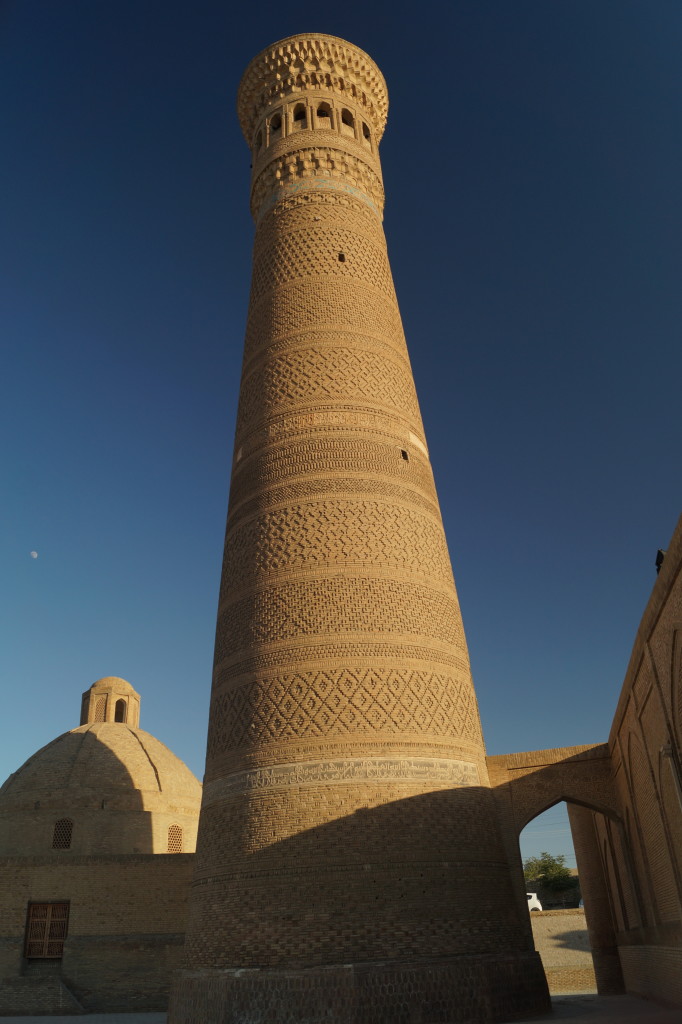
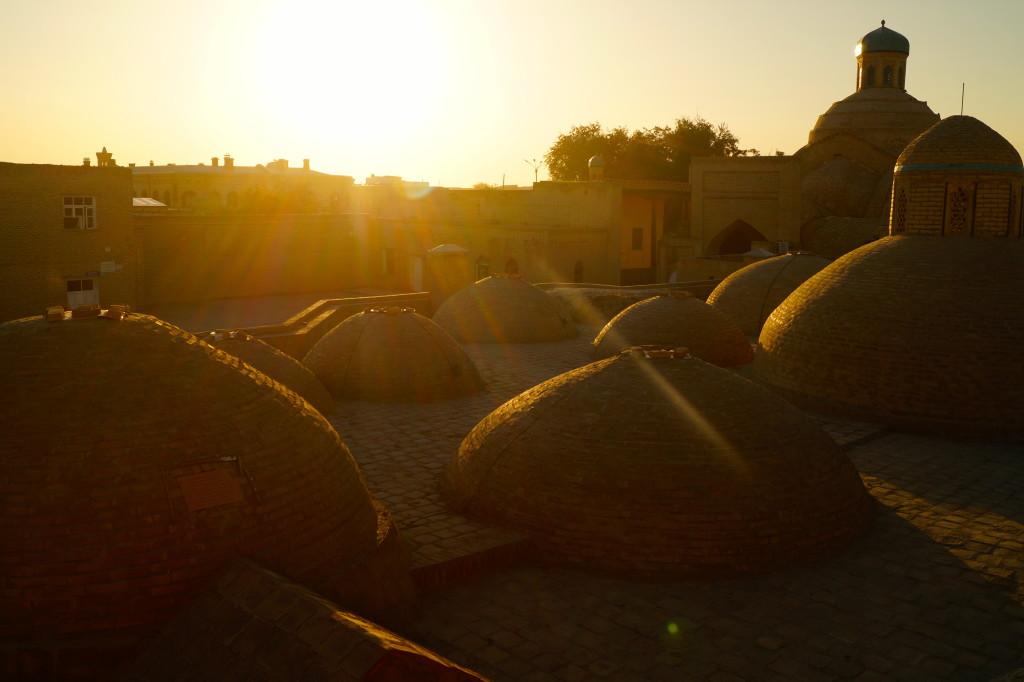
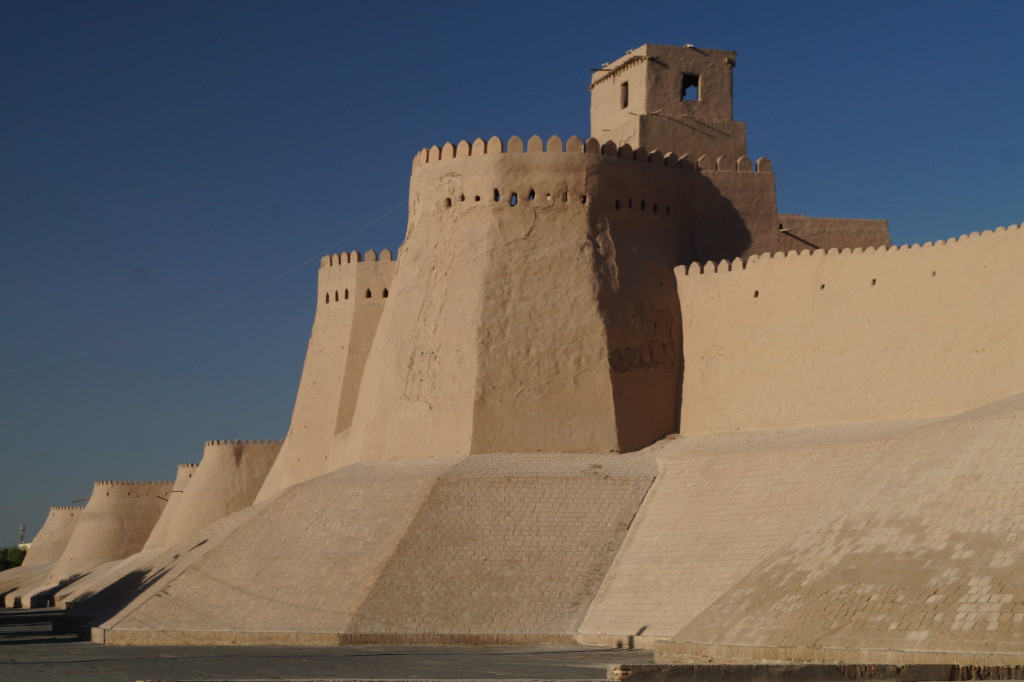
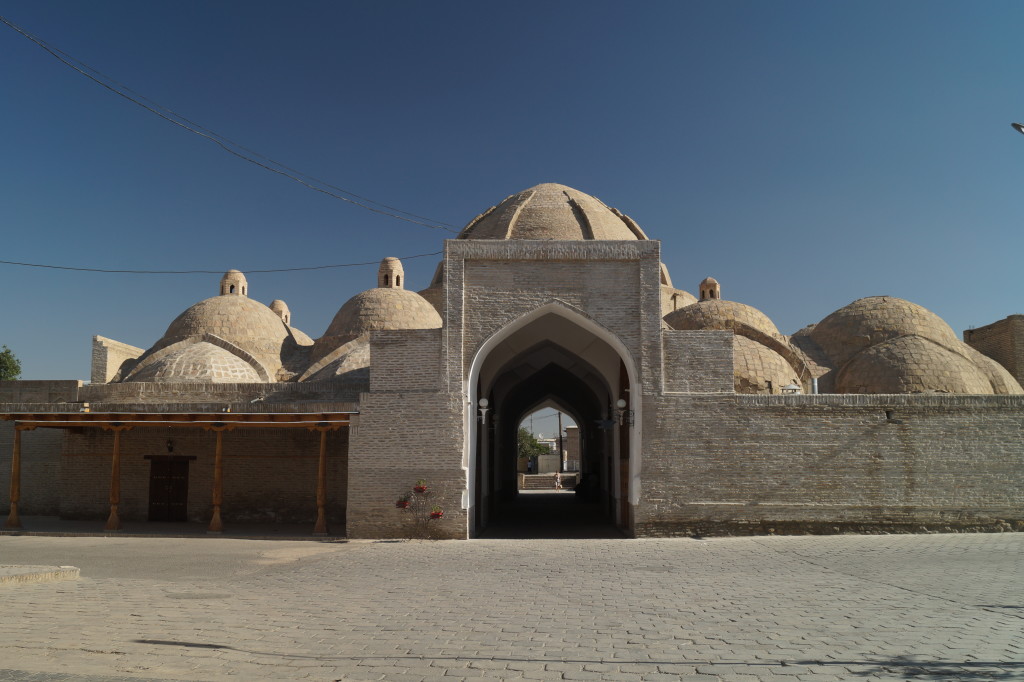
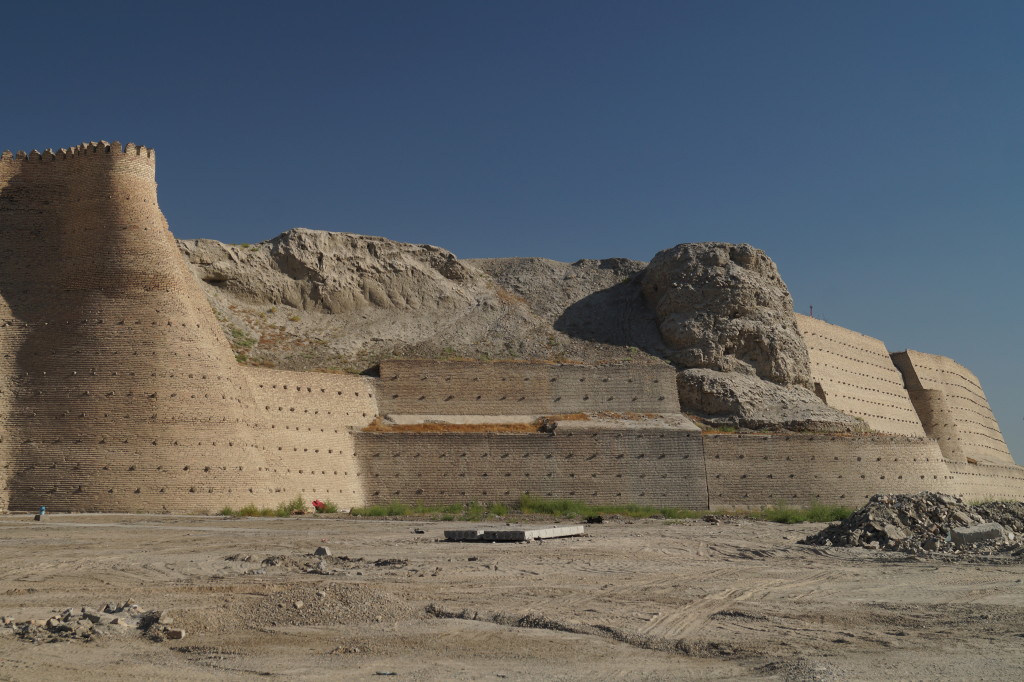
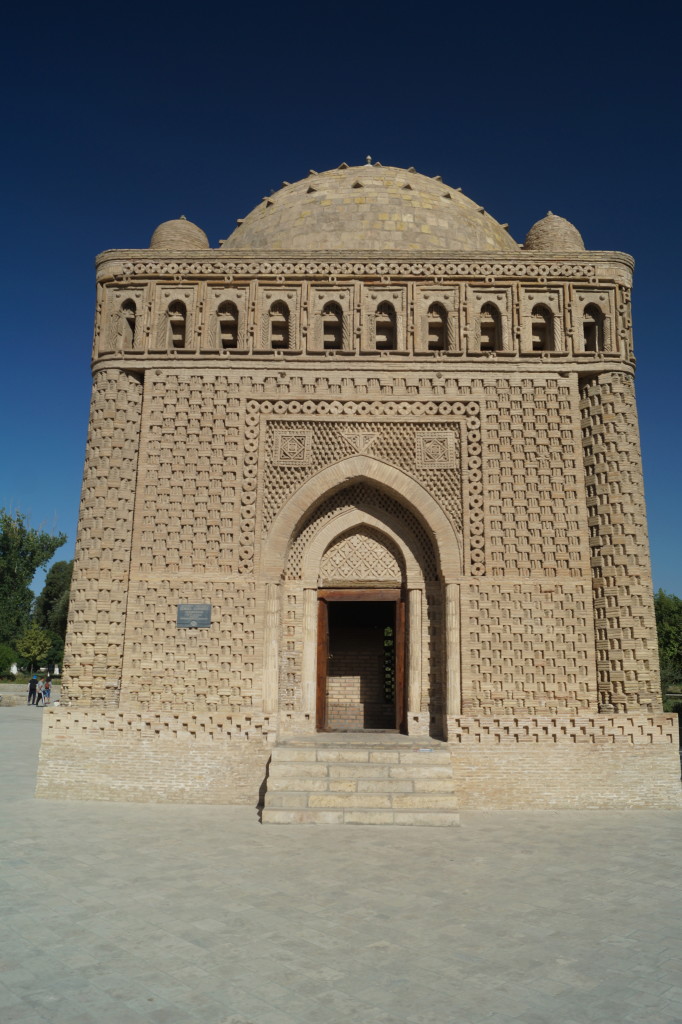
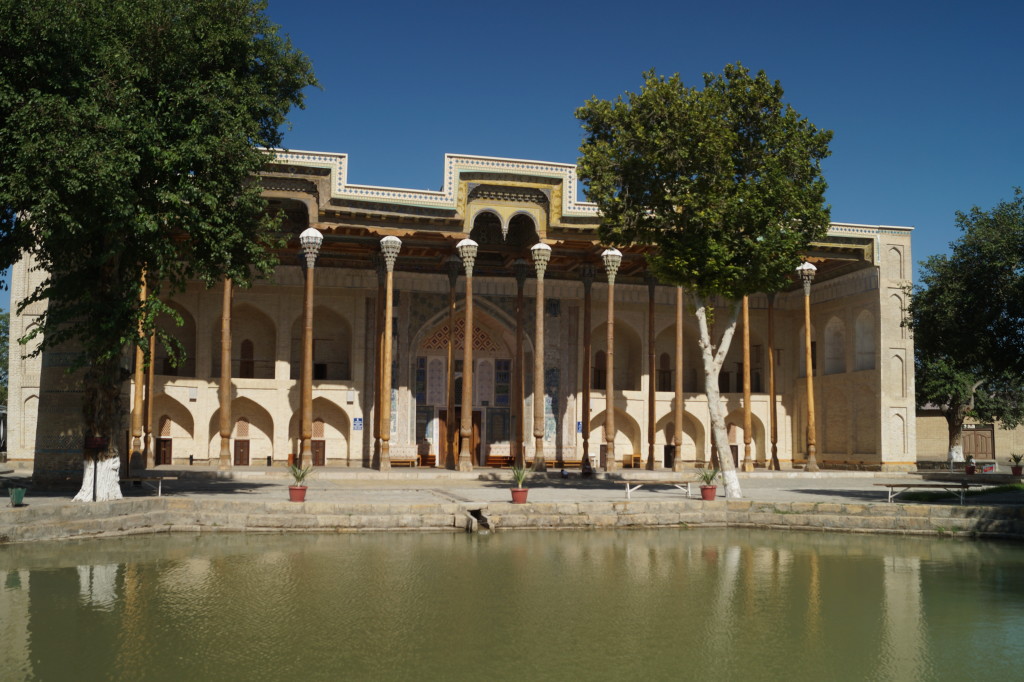
Our energy levels were much revived when we discovered a smart tea shop that served bowls of dried fruits, nuts, crystallised sugar and eastern sweets with their delicious spiced tea. Such a success we went back the following day when we were flagging. With such a sugar rush we were able to take in a few more blue tiled facades on the way home.
Our parking spot in Khiva was even more impressive just outside the high mud walls of the citadel. In the late evening sunlight the whole city glowed orange from the west. We climbed up onto the walls to view the compact city below us. In the northern end people had emerged from their houses to tend their small gardens and chat to their neighbours. Whilst in the southern part the blue tile of mosques, madrassas and palaces contrasted beautifully with the surrounding cinnamon walls.
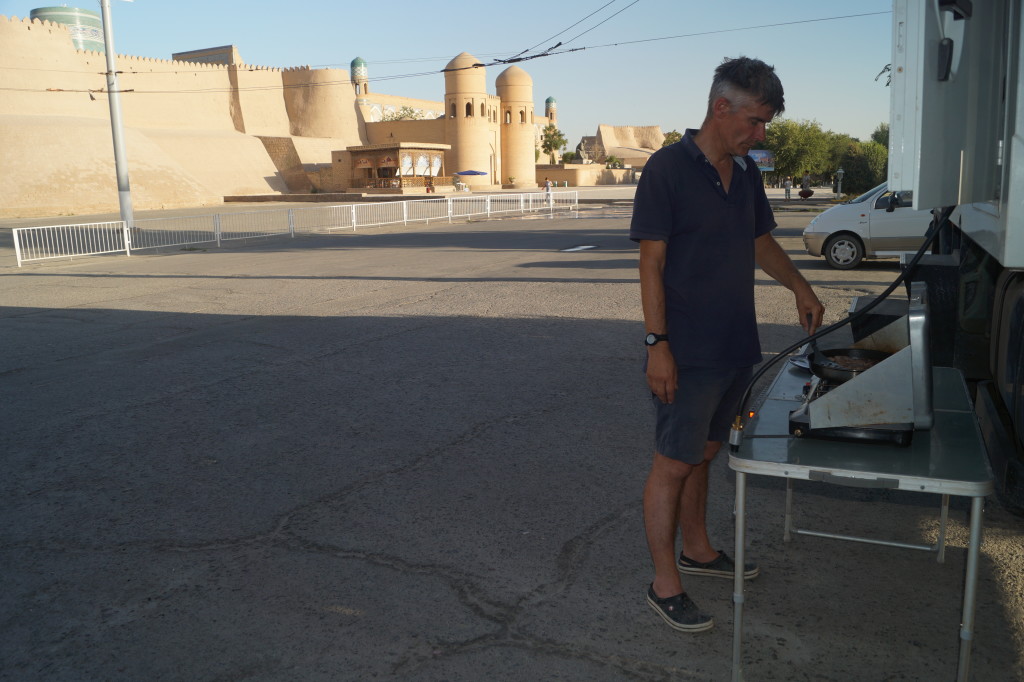
The walled city was famous for its ancient slave market and, like Bukhara, Khiva seemed to be stuffed full of blue domes, amazingly blue tiled portals and palaces. It seemed more of museum than a living city, however the market just outside the citadel seemed to be bustling.
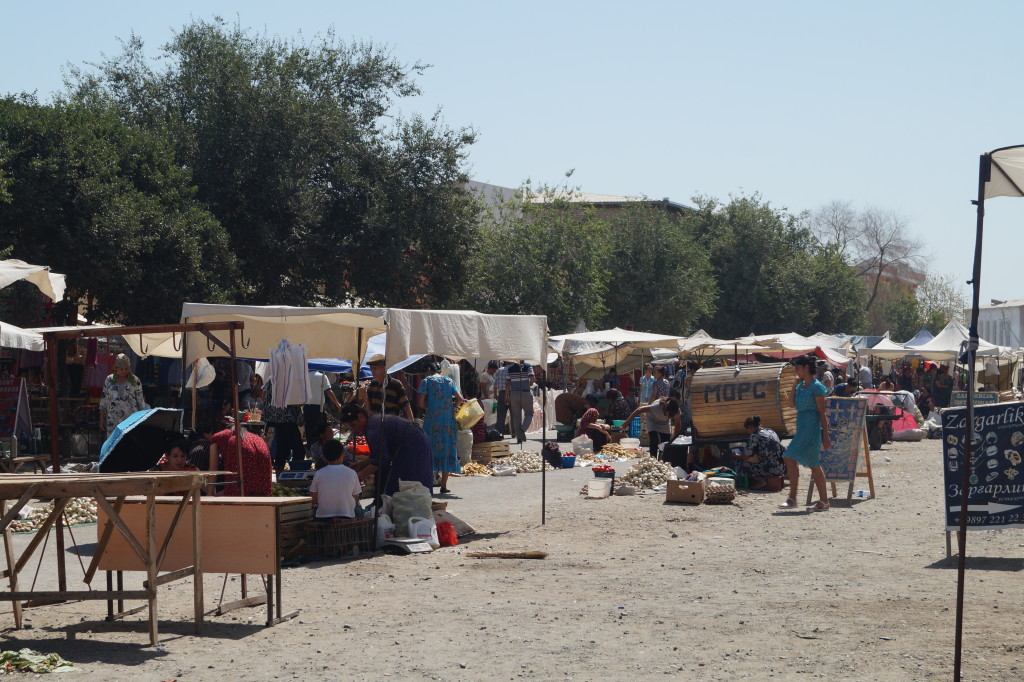
The roof of Juma Mosque is held up by 218 intricately carved posts, a striking sight for the shadows they created. Climbing the minaret, patterned with alternative stripes of blue and green tiles, gave us an arresting view of the whole city. Especially the Kalta Minor Minaret which was only partially completed by 1855, when the Khan died. This truncated tower with its strikingly patterned facade was supposed to allow the Khan to see all the way to Bukhara. Already eye-catching it would have been breathtaking if it had been finished. Weirdly, as we climbed down the shin high steps made of twisted trunks but worn smooth by centuries of use, we all developed painful cramps in our legs. Although we were well hydrated I guess the extreme heat does strange things to your body, it was time to retreat to the shade.
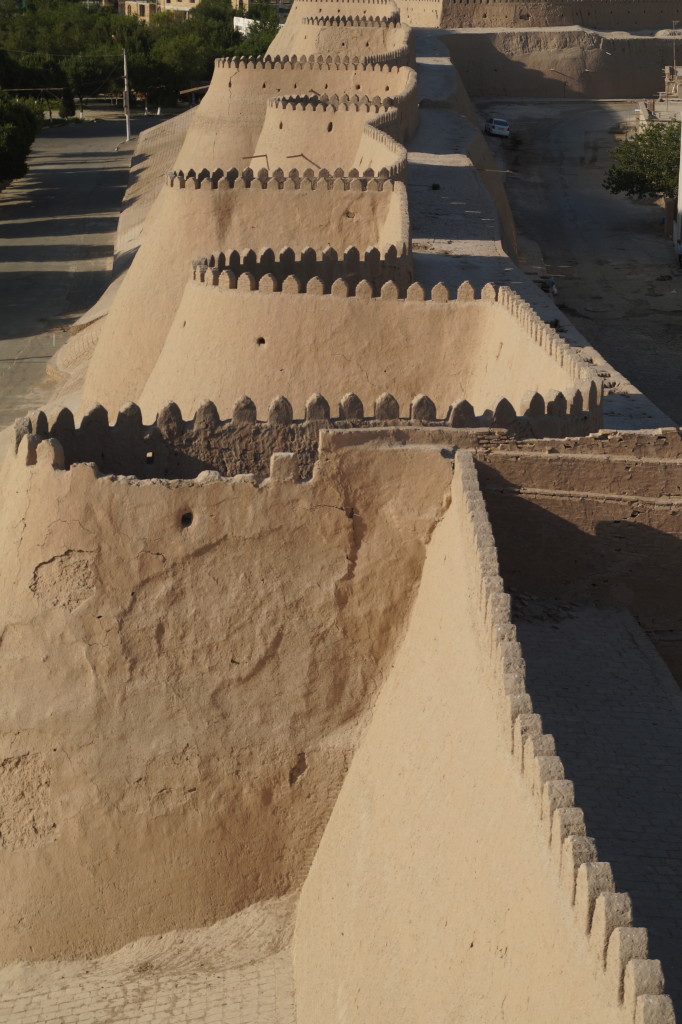
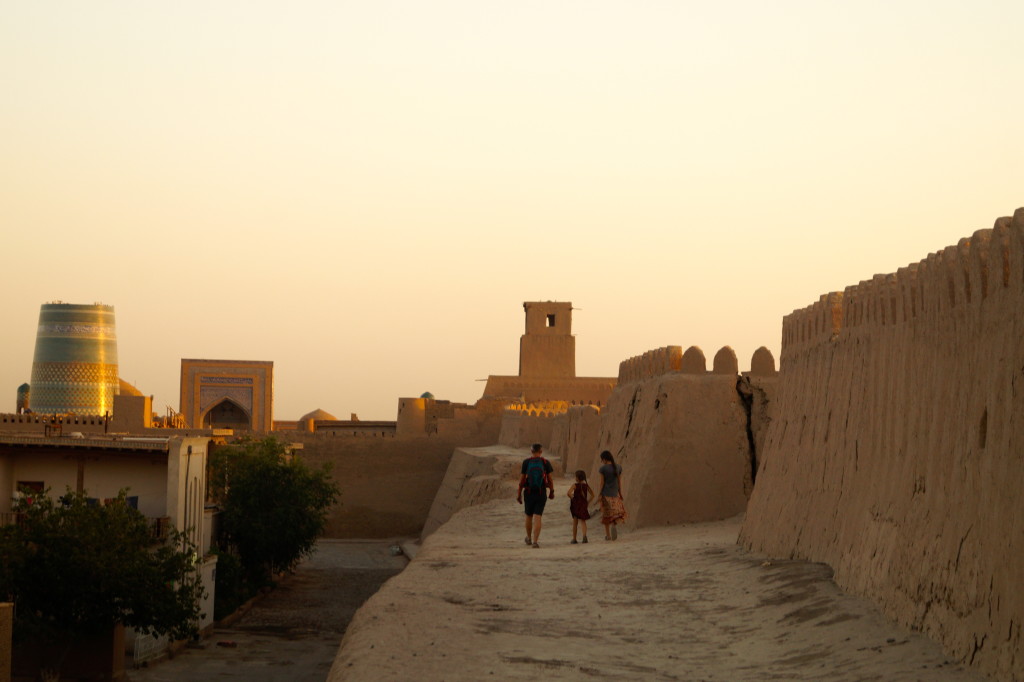
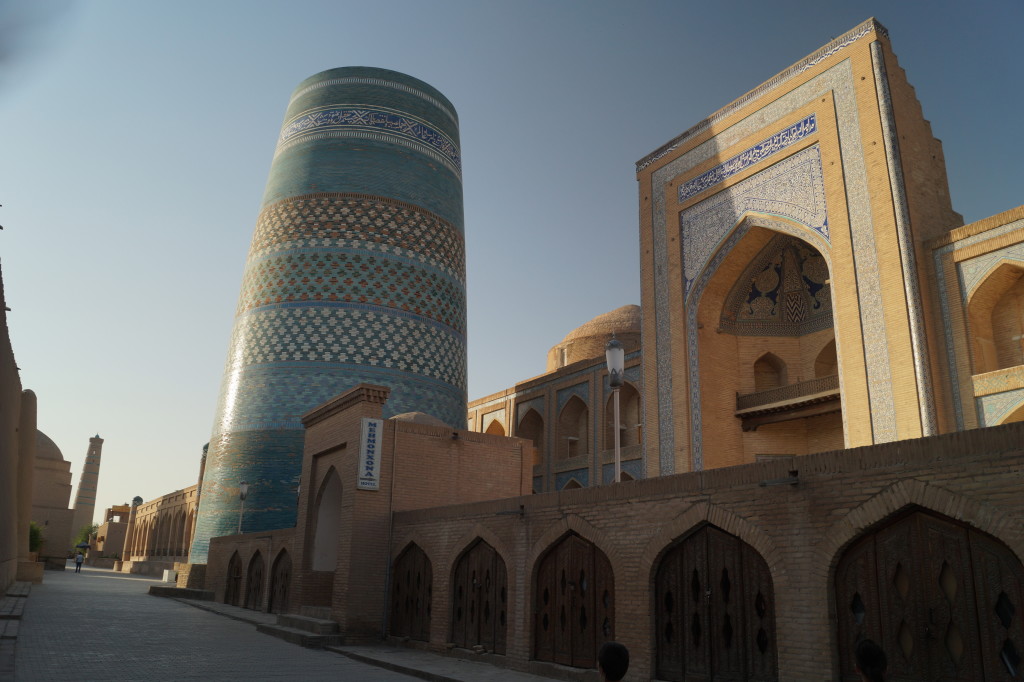
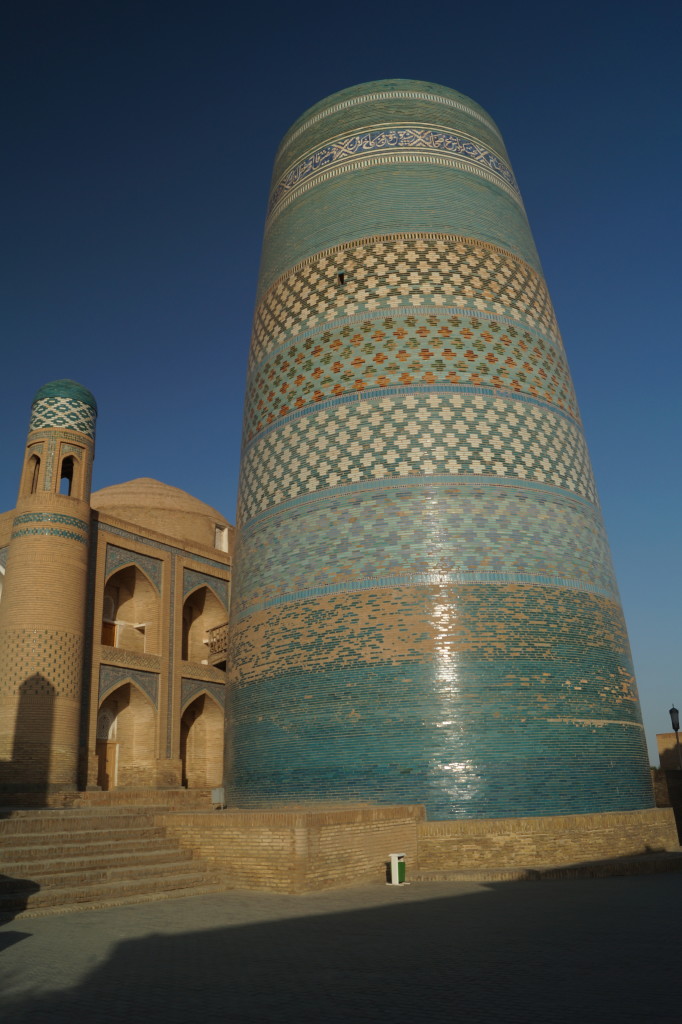
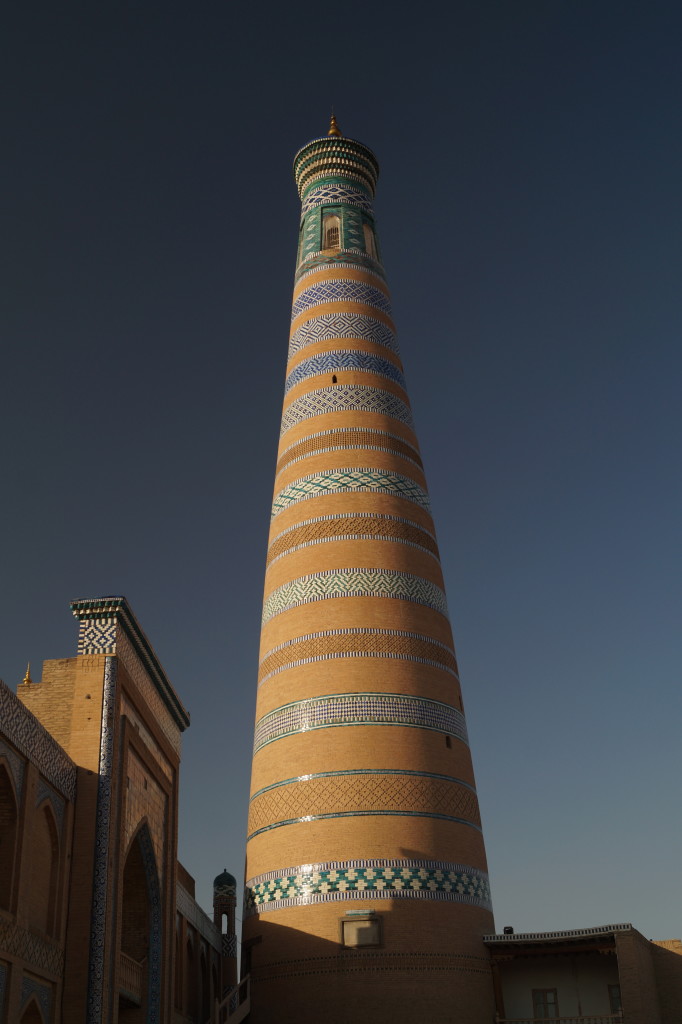
That afternoon the truck's internal thermometer hit 54°C! Even with all the windows open and the fans on, it was hard to dissipate the heat. We had all hoped to sleep in one of the hostel's air conditioned rooms that night but we were worried about getting the truck cool enough. Steve gallantly offered to sleep in the truck with all the windows open to cool it in the lower nighttime temperatures, a balmy 38° C.
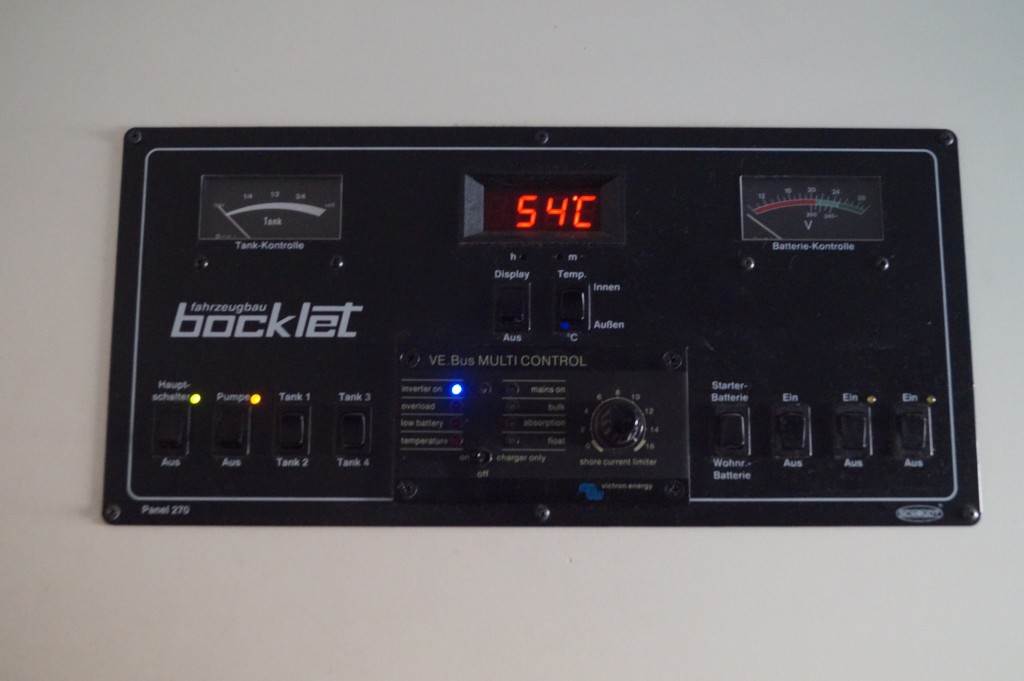
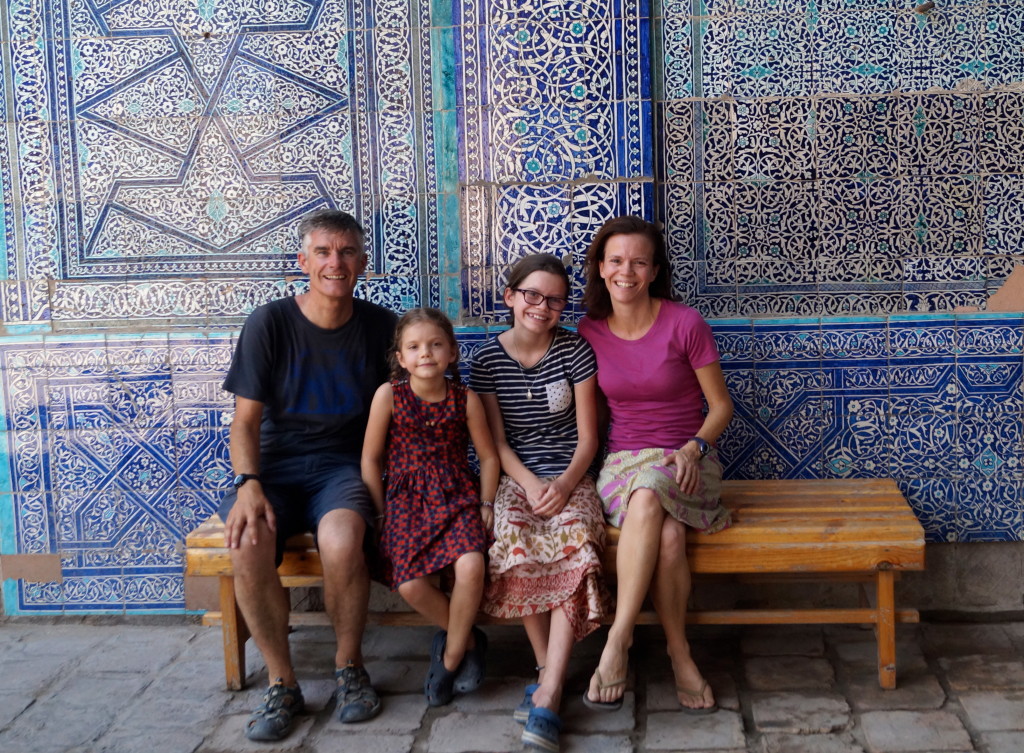
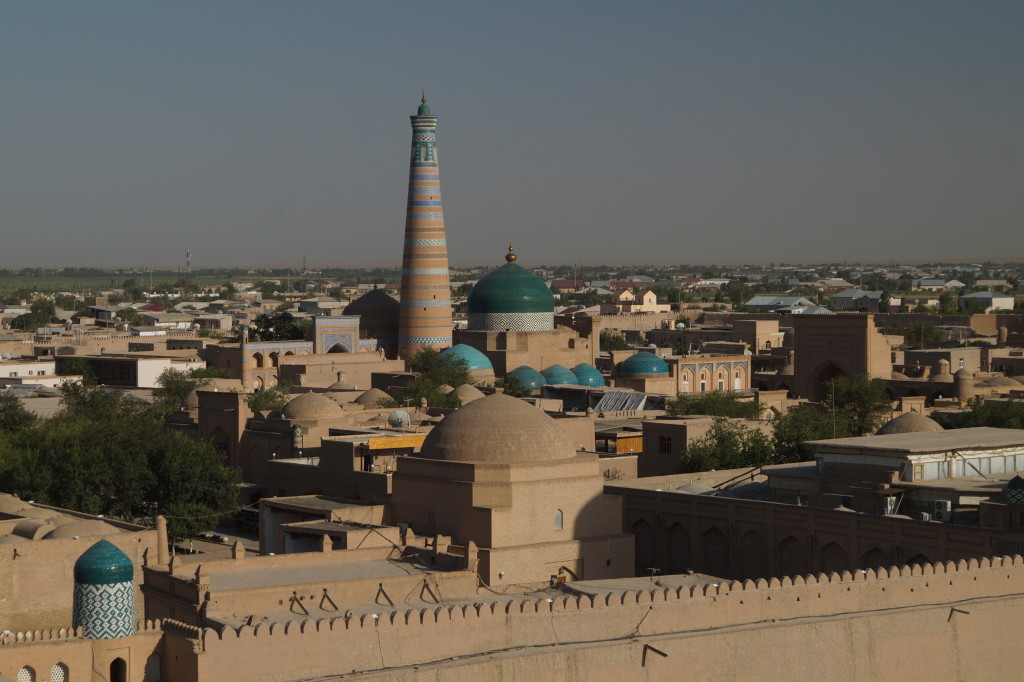
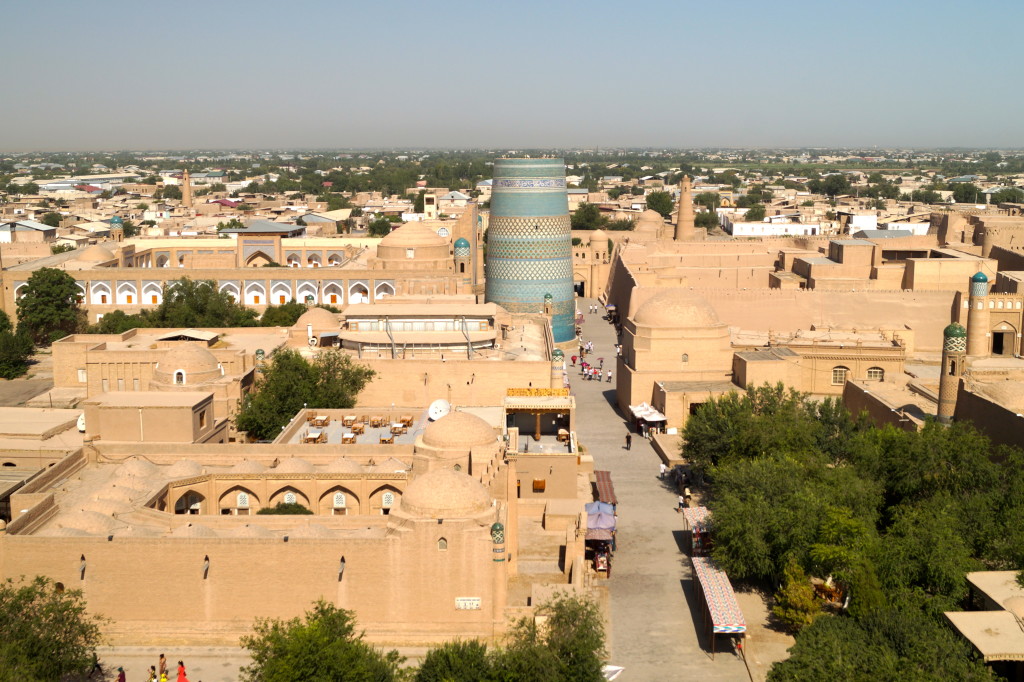
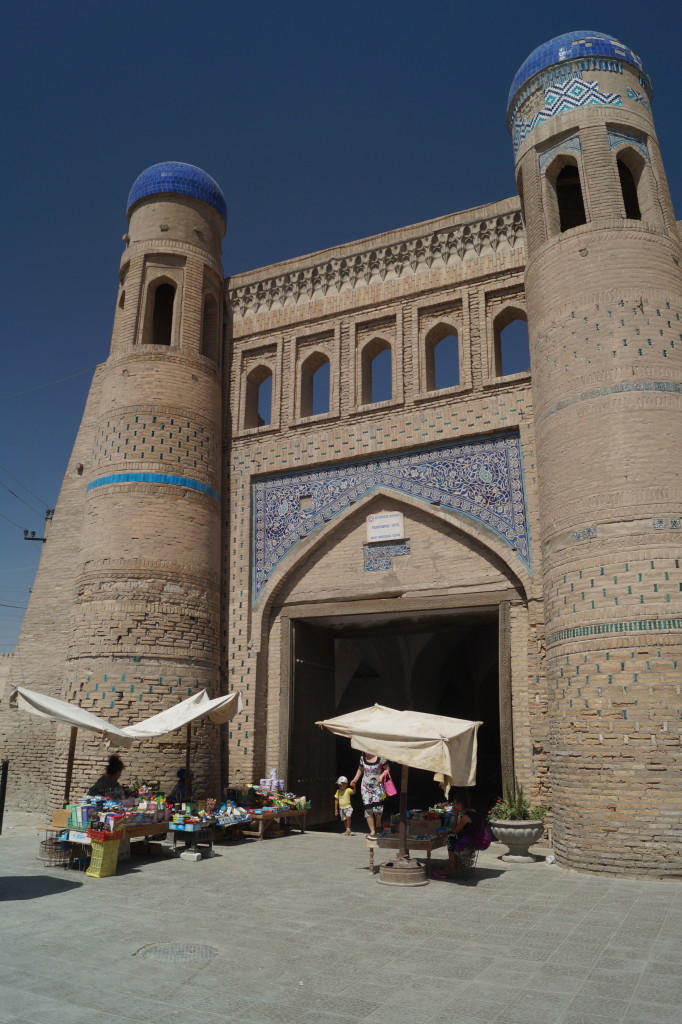
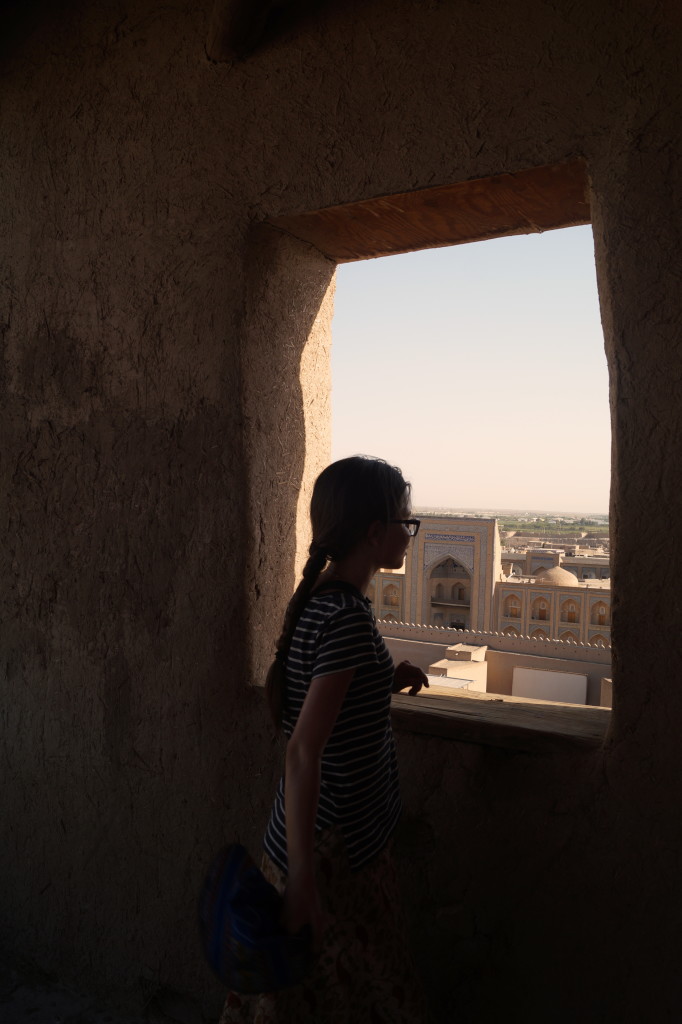
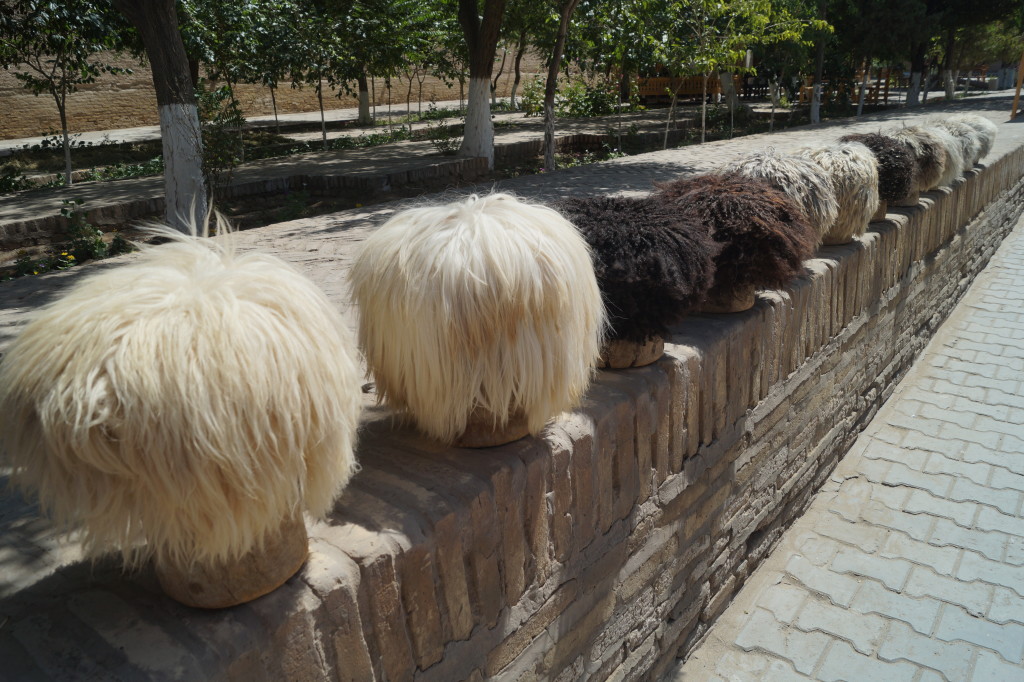
Our last city in Uzbekistan, Nukus, was a Soviet created city with none of the romance of its Silk Road counterparts. It did have an art gallery with an interesting history, its founder, Igor Savitsky, saved thousands of Soviet era avant-garde paintings that were supposed to be destroyed. It was our first stop on what will be a long drive across the desert, into Kazakstan and towards the Caspian Sea.







 The whole region was the backdrop of a period of high drama and intrigue in the Victorian era between the British and the Russians. Dramatically named the "Great Game" in English or the "Tournament of Shadows" in Russian. This struggle for power by the two great empires, reads like something out of a historical adventure novel. Steve was keen to see the bug infested pit where two British officers, Charles Stoddart and Arthur Conolly were held by the Emir of Bukhara for 3 years before they were executed. I decided to skip that delight and sweat quietly in the shade.
The whole region was the backdrop of a period of high drama and intrigue in the Victorian era between the British and the Russians. Dramatically named the "Great Game" in English or the "Tournament of Shadows" in Russian. This struggle for power by the two great empires, reads like something out of a historical adventure novel. Steve was keen to see the bug infested pit where two British officers, Charles Stoddart and Arthur Conolly were held by the Emir of Bukhara for 3 years before they were executed. I decided to skip that delight and sweat quietly in the shade.









 Our energy levels were much revived when we discovered a smart tea shop that served bowls of dried fruits, nuts, crystallised sugar and eastern sweets with their delicious spiced tea. Such a success we went back the following day when we were flagging. With such a sugar rush we were able to take in a few more blue tiled facades on the way home.
Our parking spot in Khiva was even more impressive just outside the high mud walls of the citadel. In the late evening sunlight the whole city glowed orange from the west. We climbed up onto the walls to view the compact city below us. In the northern end people had emerged from their houses to tend their small gardens and chat to their neighbours. Whilst in the southern part the blue tile of mosques, madrassas and palaces contrasted beautifully with the surrounding cinnamon walls.
Our energy levels were much revived when we discovered a smart tea shop that served bowls of dried fruits, nuts, crystallised sugar and eastern sweets with their delicious spiced tea. Such a success we went back the following day when we were flagging. With such a sugar rush we were able to take in a few more blue tiled facades on the way home.
Our parking spot in Khiva was even more impressive just outside the high mud walls of the citadel. In the late evening sunlight the whole city glowed orange from the west. We climbed up onto the walls to view the compact city below us. In the northern end people had emerged from their houses to tend their small gardens and chat to their neighbours. Whilst in the southern part the blue tile of mosques, madrassas and palaces contrasted beautifully with the surrounding cinnamon walls.
 The walled city was famous for its ancient slave market and, like Bukhara, Khiva seemed to be stuffed full of blue domes, amazingly blue tiled portals and palaces. It seemed more of museum than a living city, however the market just outside the citadel seemed to be bustling.
The walled city was famous for its ancient slave market and, like Bukhara, Khiva seemed to be stuffed full of blue domes, amazingly blue tiled portals and palaces. It seemed more of museum than a living city, however the market just outside the citadel seemed to be bustling.
 The roof of Juma Mosque is held up by 218 intricately carved posts, a striking sight for the shadows they created. Climbing the minaret, patterned with alternative stripes of blue and green tiles, gave us an arresting view of the whole city. Especially the Kalta Minor Minaret which was only partially completed by 1855, when the Khan died. This truncated tower with its strikingly patterned facade was supposed to allow the Khan to see all the way to Bukhara. Already eye-catching it would have been breathtaking if it had been finished. Weirdly, as we climbed down the shin high steps made of twisted trunks but worn smooth by centuries of use, we all developed painful cramps in our legs. Although we were well hydrated I guess the extreme heat does strange things to your body, it was time to retreat to the shade.
The roof of Juma Mosque is held up by 218 intricately carved posts, a striking sight for the shadows they created. Climbing the minaret, patterned with alternative stripes of blue and green tiles, gave us an arresting view of the whole city. Especially the Kalta Minor Minaret which was only partially completed by 1855, when the Khan died. This truncated tower with its strikingly patterned facade was supposed to allow the Khan to see all the way to Bukhara. Already eye-catching it would have been breathtaking if it had been finished. Weirdly, as we climbed down the shin high steps made of twisted trunks but worn smooth by centuries of use, we all developed painful cramps in our legs. Although we were well hydrated I guess the extreme heat does strange things to your body, it was time to retreat to the shade.




 That afternoon the truck's internal thermometer hit 54°C! Even with all the windows open and the fans on, it was hard to dissipate the heat. We had all hoped to sleep in one of the hostel's air conditioned rooms that night but we were worried about getting the truck cool enough. Steve gallantly offered to sleep in the truck with all the windows open to cool it in the lower nighttime temperatures, a balmy 38° C.
That afternoon the truck's internal thermometer hit 54°C! Even with all the windows open and the fans on, it was hard to dissipate the heat. We had all hoped to sleep in one of the hostel's air conditioned rooms that night but we were worried about getting the truck cool enough. Steve gallantly offered to sleep in the truck with all the windows open to cool it in the lower nighttime temperatures, a balmy 38° C.






 Our last city in Uzbekistan, Nukus, was a Soviet created city with none of the romance of its Silk Road counterparts. It did have an art gallery with an interesting history, its founder, Igor Savitsky, saved thousands of Soviet era avant-garde paintings that were supposed to be destroyed. It was our first stop on what will be a long drive across the desert, into Kazakstan and towards the Caspian Sea.
Our last city in Uzbekistan, Nukus, was a Soviet created city with none of the romance of its Silk Road counterparts. It did have an art gallery with an interesting history, its founder, Igor Savitsky, saved thousands of Soviet era avant-garde paintings that were supposed to be destroyed. It was our first stop on what will be a long drive across the desert, into Kazakstan and towards the Caspian Sea. 